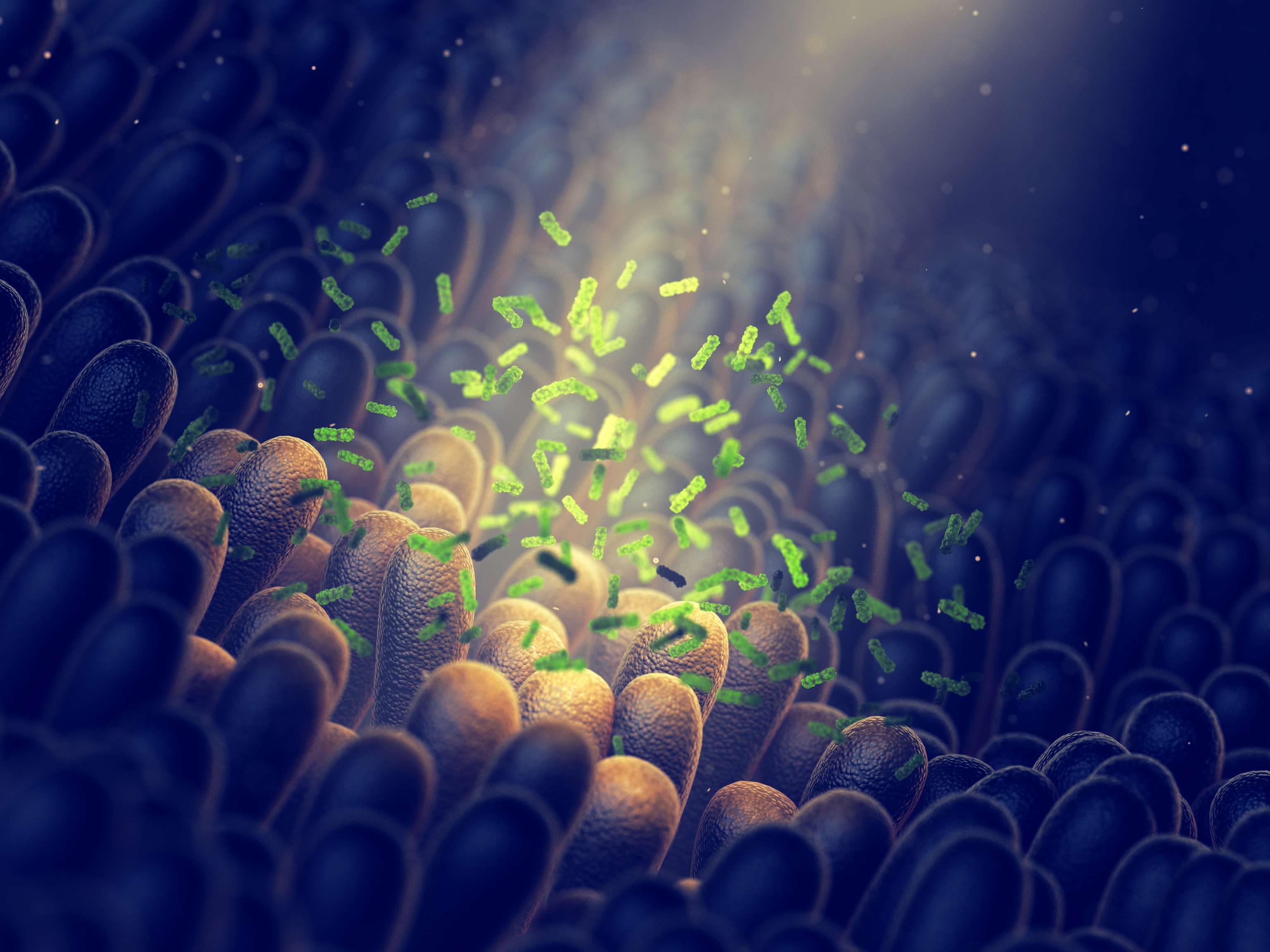Bacteria also communicate with each other

Quorum sensing
Bacteria use communication between cells to coordinate collective behavior in response to changes in cell density and community species composition. This process is also called quorum sensing, or QS for short. This communication process is dependent on cell density and is only effective when the concentration of certain extracellular signaling molecules (i.e., autoinducers) emitted by bacteria exceeds a threshold level in the medium. Such signaling molecules, or AIs, can trigger a genetic regulatory process, resulting in the expression of specific genetic information in the recipient bacterium (i.e., gene expression). This process has already been demonstrated in over 70 bacteria.
As with human language, these signals also vary between bacterial species. For example, some bacteria can interpret many different signals, while others respond to only a few. With the help of this communication process, bacterial colonies can carry out various functions: Sporulation (i.e., process of spore formation), bioluminescence (i.e., ability to produce light), virulence (i.e., ability to infect), conjugation (i.e., genome transfer through cell contact), competence (i.e., ability to take up DNA and thereby transform), and biofilm formation (i.e., community of life with a slime-like matrix).
How does QS work?
During the reproductive phase of bacteria, they develop AIs. While Gram-negative bacteria produce so-called acyl-homoserine-lactones ( HSL for short), in Gram-positive bacteria extracellular pheromones are responsible for cell communication. The HSLs can passively pass through the thin cell wall - the pheromones, however, have to be actively transported through the cell wall with the help of additional energy (i.e. ATP). In both cases, the AIs move out of the individual cells. As bacteria proliferate, the concentration of autoinducers also increases and hits a "critical mass". The effect of this threshold is that it would be energetically unfavorable if AIs continued to escape from cells (i.e., by diffusion equilibrium or transport). This increases the concentration within the cells. Once this intracellular concentration increases, the AIs bind to the bacteria's receptors, triggering signals and resulting in gene expression. In many bacteria, the change in gene expression involves shutting down more AIs.
QS in the coordination of disease development
The well-known Gram-negative disease-causing bacterium Vibrio ch olerae (i.e., causative agent of cholera) uses QS for contagiousness (i.e., virulence) during infection with cholera. In this process, the bacterium builds biofilms to more effectively transport nutrients between colonies while protecting them. These communication processes increase the bacteria's ability to reproduce and potentially secrete cholera toxin, which can cause severe diarrheal disease in humans.
With the new knowledge, scientists are now researching the QS process of V. cholerae as a therapeutic possibility. For example, a study published in 2015 showed that overloading cholera bacteria with their autoinducers could stop the process of biofilm formation altogether, potentially delaying the infection process. This could allow the human immune system to catch up during the otherwise rapid infection phase. Medical relevance also exists as a possible solution to the problem of the sharp rise in antibiotic resistance among different bacteria.
Medical relevance
Although the research of Silverman and Bassler has created a new understanding of the processes of microbial colonies, this was only after years of persuasion and after many publications. For a long time, experts were of the opinion that QS was only a special expression between the bacteria Vibrio fischeri and the dwarf squid and was not associated with other bacteria. Today, QS has been detected several times and also offers medical potential. To combat single antibiotic-resistant germs, the respective AI system of these could be disrupted. In order to combat several different bacteria in parallel, thwarting a generally effective AI system would be more efficient. Scientists are currently carrying out intensive research into these concepts - however, the substances are not yet effective enough for a clinical effect and do not possess all the properties required for a drug. A reverse effect is also conceivable, he said, if QS could be used to support the mechanisms of beneficial bacteria in the gut or on the skin.
In 2019, Bassler showed that phages (i.e., viruses that attack bacteria) also use QS to experience the moment with the highest density of bacteria. If they infect bacteria when their numbers are highest, the likelihood of highest offspring of phages is also highest.
Due to the Corona pandemic, the award ceremony has been postponed to March 14, 2022.
Conclusion:
The discovery and of quorum sensing systems in bacteria may have been one of the first steps in the development of more efficient microbiological and medical approaches to antibiotic research. The latest research on microbial communication is only the beginning.
Sources
- Miller MB, Bassler BL. Quorum sensing in bacteria. Annu Rev Microbiol. 2001;55:165-99. doi: 10.1146/annurev.micro.55.1.165. PMID: 11544353.
- Duddy OP, Bassler BL. Quorum sensing across bacterial and viral domains. PLoS Pathog. 2021 Jan 7;17(1):e1009074. doi: 10.1371/journal.ppat.1009074. PMID: 33411743; PMCID: PMC7790227.
- Hoang D. Lu, Alina C. Spiegel, Amanda Hurley, Lark J. Perez, et al. Modulating Vibrio cholerae Quorum-Sensing-Controlled Communication Using Autoinducer-Loaded Nanoparticles. Nano Lett. American Chemical Society. Feb. 2015
- Paul Ehrlich-Stiftung
- Deutsche-Apotheker-Zeitung
- Bonnie L. Bassler Publikationen
- Quorum-Sensing
- Wie Quorum-Sensing funktioniert
- QS - Goethe-Universität Frankfurt am Main

Danilo Glisic
Last updated on 02.07.2021
Your personal medication assistant
Browse our extensive database of medications from A-Z, including effects, side effects, and dosage.
All active ingredients with their effects, applications, and side effects, as well as the medications they are contained in.
Symptoms, causes, and treatments for common diseases and injuries.
The presented content does not replace the original package insert of the medication, especially regarding the dosage and effects of individual products. We cannot assume liability for the accuracy of the data, as the data has been partially converted automatically. Always consult a doctor for diagnoses and other health-related questions.
© medikamio